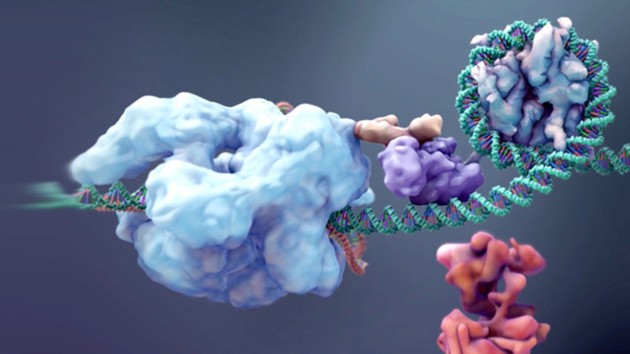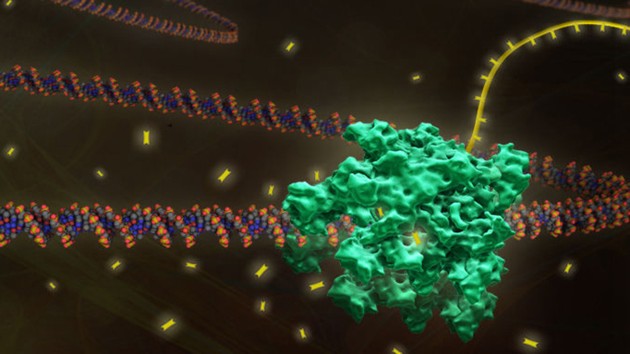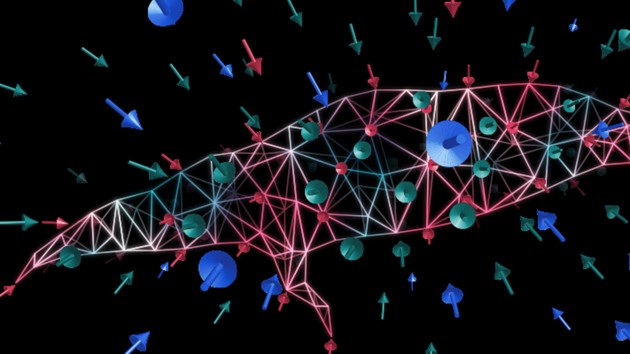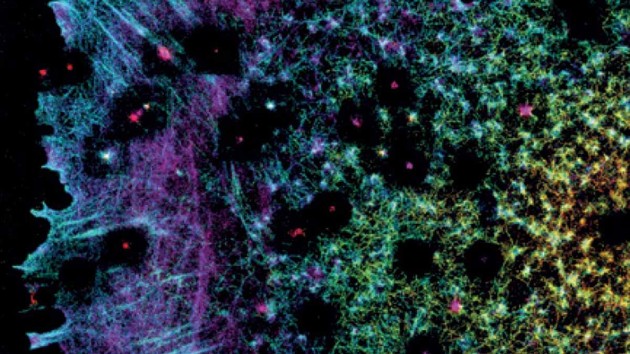Collection |
Collections
Filters
-
Collection Type
-
-
Collection |
 Expanding the CRISPR Toolbox
Expanding the CRISPR Toolbox
The CRISPR-Cas9 system is best known for its ability to knock out or replace specific genes, via targeted cleavage of the genome. But scientists are developing many more applications, typically by using an inactive Cas9 to target other enzymes to specific genomic sites. From transcriptional regulation to base editing, these developments are extending the range of biological questions that can be probed with CRISPR/Cas9.
-
Collection |
 The FANTOM5 Project
The FANTOM5 Project
A collection of research and data papers published across Nature Research, from the fifth cycle of the Functional ANnoTation Of the Mammalian genome project (FANTOM).
Image: Richard Janissen - TU Delft -
Collection |
 Dynamic materials for tissue engineering
Dynamic materials for tissue engineering
The tissue microenvironment is structurally and dynamically complex. Materials designed to interact with diseased or compromised tissue to induce regeneration, or to act as a scaffold for the production of tissues in the laboratory, thus need to be responsive to the microenvironment. For this, researchers leverage increased knowledge of the importance of the spatiotemporal integration of biomaterials with the tissue environment, as well as latest developments in high-resolution technologies in imaging and in materials synthesis and fabrication. Dynamically responsive materials for use in tissue engineering respond to external stimuli or have inherent properties that trigger the targeted, timed release of integral chemical constituents or of incorporated ligands for the controlled repair or remodelling of surrounding tissue. This collection highlights recent impactful advances, published in Nature-branded journals, in such dynamic biomaterials.
Image: Tulsi Voralia -
Collection |
 The Epitranscriptome
The Epitranscriptome
Welcome to 'The Epitranscriptome', an article collection from various Nature journals highlighting the role of mRNA modifications in RNA fate and gene expression.
-
Collection |
Multicolor flow cytometry
Flow cytometry is a powerful laser-based technology. Due to developments in hardware, software and new fluorescent reagents it has now become possible to measure multiple parameters of individual cells with enhanced efficiency and quality and, notably, to generate more data with a smaller sample size than would be required for serial analysis. How have the advances of modern multicolor flow cytometry driven research forward, especially in the field of immunology?
-
Collection |
Collection: Nobel Prize in Chemistry 2014
The 2014 Nobel Prize in Chemistry was awarded for the development of superresolution fluorescence microscopy, which enables the imaging of fine biological structures previously thought to be unresolvable using light. This collection of news pieces and articles by the Nobel laureates and their collaborators celebrates this achievement.
-
Collection |
Collection: Light-sheet Microscopy
The use of a planar sheet of light for illumination in fluorescence microscopy allows researchers to image sample Vol.s faster than possible with other current methods, while limiting light dosage. This collection of articles provides a brief overview of this exciting methodology and the biological research applications that it makes possible.
-
Collection |
Collection: Technology Features
A selection of Technology Features published in Nature and Nature Methods over the past year highlights topics in microscopy, antibodies, cell heterogeneity, epigenetics, genome editing, post-translational modifications, PCR, stem cell–niche engineering, cell culture media, in vivo imaging, synthetic biology and genome analysis workflows and tools.
-
Collection |
Collection: Flow Cytometry
Flow cytometry has been an essential technique in modern biological research and the number and variety of applications using flow cytometers has been expanding rapidly. This collection of articles highlights recent methodological advances in the use of flow cytometry and the powerful new applications being developed.
-
Collection |
Super-resolution Microscopy
Fluorescence microscopy is acquiring new capabilities as methodological developments allow it to break the diffraction limit. This Collection of articles from several leaders in the field highlights the diversity of super-resolution microscopy techniques being developed and the principles that allow them to overcome this long-standing limitation.
-
Collection |
Collection: Super-resolution Microscopy
Fluorescence microscopy is acquiring new capabilities as methodological developments allow it to break the diffraction limit. This collection of articles from several leaders in the field highlights the diversity of super-resolution microscopy techniques being developed and the principles that allow them to overcome this long-standing limitation.

 Super-resolution microscopy
Super-resolution microscopy